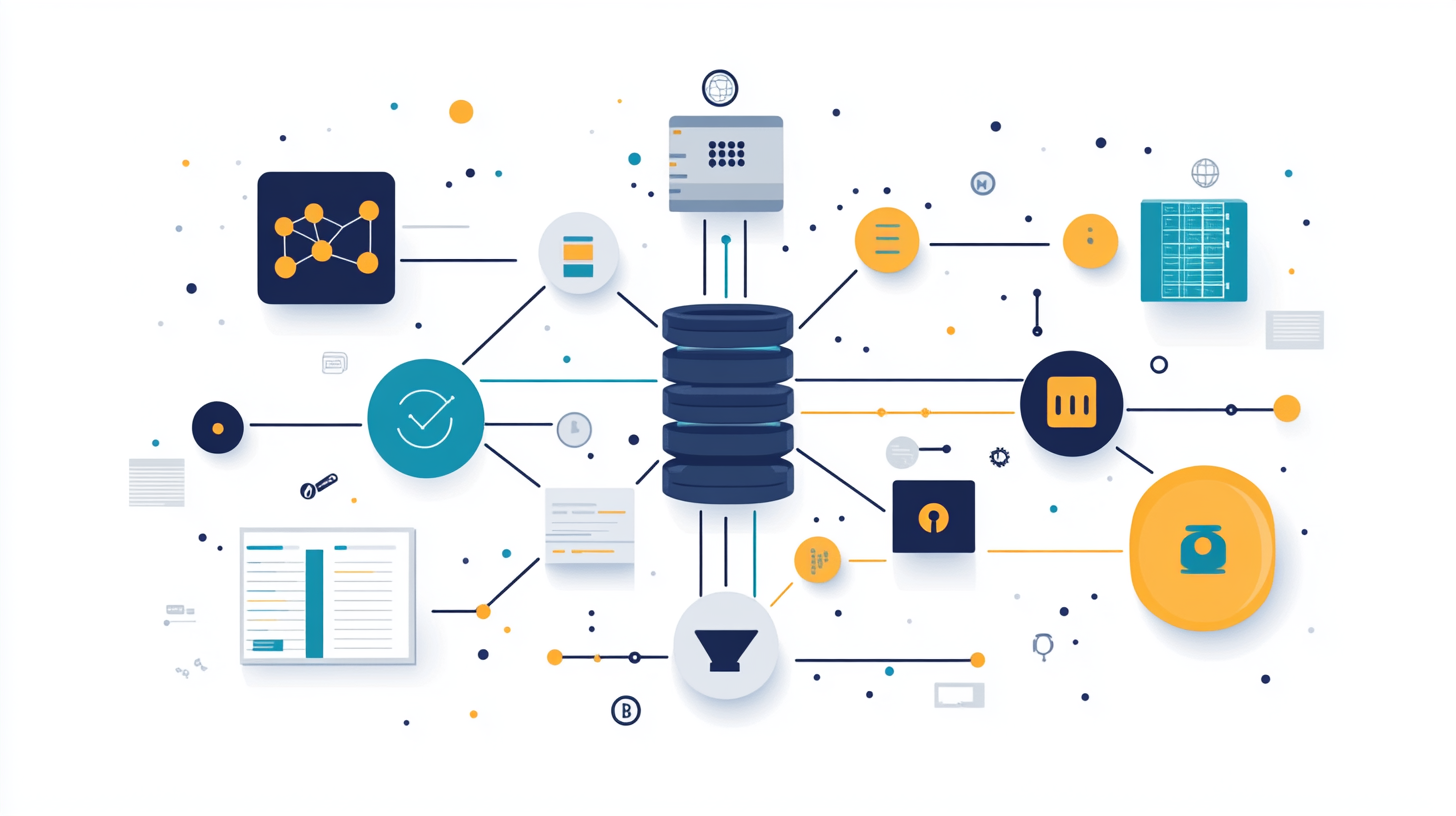AI Ops: Automating Incident Detection & Remediation – Applying ML to Logs/Traces, Defining Actionable Anomaly Thresholds
AI Ops uses machine learning to detect anomalies in logs, traces, and metrics, define actionable thresholds, and automate incident remediation—enabling faster, smarter, and more resilient IT operations at scale.
Introduction
The scale and complexity of modern IT systems have reached a point where traditional operational practices are no longer sustainable. With cloud-native architectures, container orchestration platforms like Kubernetes, microservices proliferation, and CI/CD pipelines pushing changes to production dozens of times a day, operations teams face a relentless barrage of alerts, logs, and metrics. In this environment, manual incident triage and rule-based monitoring quickly break down.
Artificial Intelligence for IT Operations (AI Ops) has emerged as a response to this overload. Coined by Gartner, AI Ops refers to the application of machine learning and data science to enhance and automate IT operations. At its core, AI Ops aims to extract patterns and insights from massive volumes of observability data—logs, metrics, traces, and events—to drive faster, more accurate, and increasingly autonomous decision-making.
Unlike conventional monitoring, which depends on predefined static rules and thresholds, AI Ops leverages statistical and ML models that adapt dynamically to changing baselines and system behavior. This shift transforms incident management from reactive firefighting to proactive anomaly detection and intelligent remediation. It empowers Site Reliability Engineers (SREs), DevOps teams, and IT managers to respond not just faster, but smarter.
However, deploying AI Ops in production is not trivial. Success requires a nuanced approach that blends robust ML techniques, domain-specific knowledge, and thoughtful systems design. This includes determining what constitutes an “anomaly” in a complex, noisy environment, designing workflows that can act on these signals, and integrating automation without compromising reliability or safety.
This article focuses specifically on two pillars of AI Ops: automated anomaly detection in logs and traces using machine learning, and remediation automation using orchestrated workflows. We’ll explore how ML models can learn from historical observability data to surface critical deviations, how to define actionable thresholds to reduce noise, and how to trigger remediation steps—ranging from alert escalations to self-healing mechanisms—with minimal human intervention.
By grounding these concepts in real-world implementations and case studies, we aim to offer more than theory. This is a practical, engineering-oriented guide for those building or scaling AI Ops in their organizations.
ML-Driven Anomaly Detection in Logs and Traces
At the core of AI Ops lies the ability to automatically detect anomalies that signal potential incidents—before they escalate. In modern environments where logs and traces are generated at terabyte scales daily, this isn't just about spotting the obvious; it's about surfacing the subtle. Traditional rule-based systems, which rely on static thresholds or regular expression-based log scanning, struggle to keep pace with such variability. Machine learning (ML) fills this gap by learning from historical data, modeling system behavior, and identifying deviations that truly matter.
Types of Anomalies in Observability Data
In the context of IT operations, anomalies can manifest in various ways across different data sources:
- Logs: Sudden surges in log volume, unseen error codes, or changes in log message structure can indicate regressions or new failure modes.
- Traces: Increased latency in spans, missing spans, or irregular service call patterns may reveal bottlenecks, downstream failures, or cascading issues.
- Metrics: Unexpected spikes, drops, or seasonality shifts in CPU usage, memory consumption, or error rates are typical signal candidates.
Identifying these anomalies requires more than pattern matching—it requires modeling baseline behavior over time, often in the presence of noise, missing data, or shifting workloads.
ML Techniques for Anomaly Detection
A variety of machine learning techniques are employed to analyze logs, traces, and metrics. The choice of algorithm often depends on the data type, volume, and desired response time.
- Unsupervised Learning: Clustering techniques such as DBSCAN or k-Means can group log messages or trace spans by similarity, allowing outliers to be flagged. Autoencoders—a type of neural network—can reconstruct “normal” log patterns and detect anomalies as those with high reconstruction errors.
- Time Series Models: Models like ARIMA, Prophet, or LSTM-based neural networks are frequently used for forecasting metrics and detecting anomalies when actual values diverge significantly from predictions. Seasonality and trend-aware models are essential to prevent misclassifying normal business-hour traffic spikes as issues.
- NLP for Log Analysis: Natural language processing techniques are increasingly applied to free-text log data. Techniques such as TF-IDF, word embeddings (e.g., Word2Vec, BERT), and sequence modeling (e.g., Transformers) are used to understand the semantic meaning of logs, enabling classification and anomaly detection. For example, LSTM-based models can detect previously unseen sequences of log events that may indicate new failure types.
- Graph-Based Models: Especially useful for trace analysis, graph neural networks (GNNs) can model service dependencies and uncover anomalous path behaviors across distributed systems.
Static vs. Adaptive Thresholding
Static thresholds—manually set limits for when metrics are “too high” or “too low”—are straightforward to implement but brittle in practice. They often lead to either over-alerting (when set too tight) or missed incidents (when too loose). Moreover, static thresholds cannot account for context, such as time of day, user traffic, or infrastructure changes.
Adaptive thresholds, in contrast, are computed dynamically based on historical data and changing patterns. ML models like moving averages with confidence bands, or percentile-based methods with contextual baselining, allow the system to account for expected variability. Advanced approaches integrate anomaly scoring systems that weigh anomaly significance by its deviation magnitude, persistence, and system criticality.
Noise Reduction and Alert Correlation
One of the biggest benefits of ML-driven anomaly detection is its ability to correlate signals across different domains. A spike in log errors, when accompanied by a trace showing increased latency in a dependent service, is more actionable than either signal alone. ML models can be trained to detect multi-modal anomalies and reduce alert noise by correlating related anomalies into a single incident narrative.
Some vendors and open-source tools implementing these methods include:
- Datadog Watchdog: Uses unsupervised learning on metrics, logs, and traces to surface anomalies with context.
- Elastic Machine Learning: Applies statistical and machine learning techniques to log and metric data for anomaly detection.
- Prometheus + Thanos/Mimir + Anomaly Detectors: Integrate with Python-based detection algorithms like Twitter’s AnomalyDetection or custom Prophet models.
Defining Actionable Thresholds
Detecting anomalies is only half the battle. If every deviation triggers an alert, teams quickly become overwhelmed. False positives, benign fluctuations, and non-actionable signals dilute attention, leading to alert fatigue and, in worst cases, missed incidents. To make anomaly detection effective, AI Ops systems must distinguish between anomalies that matter and those that don’t. This is where actionable thresholds come in—thresholds that are not just statistically significant, but contextually relevant and operationally meaningful.
What Makes an Anomaly “Actionable”?
An actionable anomaly is one that:
- Indicates potential or ongoing service degradation,
- Requires human intervention or automated remediation,
- Is not part of normal business or system behavior.
For example, a temporary spike in login failures during a load test window might be statistically anomalous, but not operationally concerning. In contrast, a subtle increase in latency that persists across deployments and correlates with an uptick in error logs could signal a code regression or downstream dependency failure—worthy of attention.
To define such thresholds, AI Ops systems must incorporate domain knowledge, historical behavior, and operational context.
Contextual Awareness and Baselining
Dynamic thresholds rely on baselines that evolve over time. These baselines are often built using:
- Rolling statistical models: Mean, median, standard deviation windows.
- Percentile-based thresholds: e.g., alert if response time > 99.9th percentile of last 7 days.
- Time-aware baselines: Models that differentiate between weekday/weekend behavior, business hours vs. off-hours, or seasonal traffic changes.
Context is key. A 10% CPU spike at 2 a.m. on a quiet server might be significant. That same spike at 10 a.m. during traffic surges might be expected.
Systems like Datadog, New Relic Lookout, and SignalFx (Splunk Observability) provide native support for dynamic thresholding using these principles.
Feedback Loops and Human-in-the-Loop Learning
No thresholding system is perfect on the first try. AI Ops platforms that support feedback loops—i.e., learning from user feedback on alerts—are more effective over time. For instance:
- Marking alerts as “useful” or “noise” can help retrain models.
- Reinforcement learning agents can refine what patterns to flag based on operator actions.
- Semi-supervised systems can cluster past anomalies and highlight only previously unseen types.
Moreover, involving SREs and on-call engineers in the loop ensures that domain-specific context—like known noisy endpoints or flaky dependencies—is captured and used to refine alert logic.
Integrating Domain Knowledge
ML models often benefit from feature enrichment with metadata that is not part of raw logs or metrics. Examples include:
- Deployment markers or release tags (to correlate anomalies with changes),
- Service ownership metadata (to direct alerts to the right team),
- Runbooks or incident history (to inform whether anomalies are recurring).
Combining these enrichments with ML anomaly scores helps prioritize alerts not just by severity, but by business or operational impact.
Multi-Signal Thresholding and Composite Alerts
Instead of triggering alerts from a single data stream, AI Ops platforms increasingly support composite alerting:
- Alert only when latency increases and error rate spikes and a deployment was made in the last 15 minutes.
- Weight anomaly signals across logs, metrics, and traces to create a single anomaly score.
This reduces false positives and increases the relevance of alerts. Google's SRE Workbook emphasizes this approach, encouraging alert strategies that capture symptoms (e.g., user-facing latency) rather than causes (e.g., CPU load).
Avoiding Alert Fatigue
The end goal is to reduce noise while maintaining coverage. This requires continuous calibration:
- Review alert accuracy and relevance regularly.
- Use canary deployments and chaos engineering to test alerting logic.
- Retire or re-tune alerts with consistently low signal-to-noise ratios.
Alert fatigue is a major operational risk. According to PagerDuty’s 2022 State of Digital Operations report, 82% of responders report feeling burnt out, with alert noise cited as a leading cause. Excessive false positives not only erode trust but can also lead teams to overlook genuinely critical issues. By focusing on actionable, context-rich anomaly thresholds, organizations can significantly improve on-call health, responsiveness, and system reliability.
Automated Remediation Workflows
Detecting anomalies is a powerful first step—but its true value is realized when systems can act on those anomalies. Automated remediation is the process of initiating and executing corrective actions without human intervention (or with minimal oversight), often triggered directly by anomaly detection engines. This capability marks a significant shift in IT operations: from static monitoring to dynamic, responsive systems that adapt and recover autonomously.
From Alerts to Action: The Remediation Lifecycle
Once an anomaly has been flagged and validated as actionable, the next steps in an AI Ops remediation pipeline typically include:
- Root Cause Enrichment: Attach relevant metadata, such as recent deployment activity, system dependencies, or service ownership, to contextualize the anomaly.
- Decision Logic Execution: Use a rules engine or trained ML model to determine the appropriate remediation action.
- Action Orchestration: Trigger scripts, workflows, or API calls to carry out the remediation.
- Verification and Rollback: Monitor system health post-action to confirm resolution or initiate rollback if conditions worsen.
This entire flow is often encapsulated in an incident response runbook, which may be codified as part of infrastructure-as-code or orchestrated through automation platforms.
Examples of AI-Triggered Remediation Workflows
Below are common remediation actions that can be automated once certain anomaly thresholds are breached:
- Container/Pod Restarts: If a container is leaking memory or a pod is returning 5xx errors, Kubernetes can be configured (via liveness/readiness probes) to restart the instance automatically.
- Service Scaling: ML models predicting increased traffic can trigger auto-scaling groups or Horizontal Pod Autoscalers before latency issues arise.
- Traffic Rerouting: Service mesh tools like Istio or Linkerd can be integrated to redirect traffic from unhealthy instances or regions.
- Circuit Breaker Triggers: Based on anomaly scores, API gateways can trip circuit breakers to avoid cascading failures.
- Database Failover: Detected I/O contention or unresponsiveness in a primary database instance can trigger automatic failover to replicas.
- Rollback to Known-Good Version: Integrate deployment tools (e.g., ArgoCD, Spinnaker, or Harness) to roll back recent deployments when correlated anomalies arise post-release.
These actions can be initiated directly by AI Ops platforms, or integrated via external orchestrators.
Tooling Ecosystem for Remediation Automation
Several platforms offer robust support for automated remediation as part of an AI Ops strategy:
- PagerDuty Event Intelligence: Uses event correlation and ML to trigger auto-remediation via workflows or webhooks.
- ServiceNow ITOM: Provides anomaly detection and workflow orchestration with built-in integration to CMDBs and service maps.
- StackStorm: Open-source automation platform that integrates with a wide array of tools, enabling custom “if-this-then-that” automation.
- Runbook Automation (RBA) tools like Rundeck or Ansible Tower: Frequently used to execute predefined scripts or workflows in response to anomalies.
- Kubernetes Operators: Custom controllers that automate lifecycle actions for specific applications based on health and performance signals.
Safety, Rollback, and Human-in-the-Loop Design
While automation can dramatically reduce MTTR, it must be implemented with safety and governance in mind. Key best practices include:
- Guardrails: Define bounds around automated actions to prevent cascading failures. For example, limit the number of restarts or maximum scale-out thresholds.
- Dry-Run and Canary Modes: Simulate actions or execute them in controlled environments first, especially for production-critical workflows.
- Approval Gates: Some actions (e.g., database failovers) might require human approval unless thresholds indicate severe degradation.
- Observability-Driven Verification: Post-remediation checks must validate system health using updated logs, traces, and metrics before confirming success.
Design Patterns for Robust Remediation
To create sustainable remediation pipelines, organizations often use patterns such as:
- Event-Driven Architecture: Use message queues (e.g., Kafka, NATS) to decouple anomaly detection from remediation logic.
- Policy as Code: Define when remediation is allowed or how it should behave using tools like Open Policy Agent (OPA).
- Self-Healing Infrastructure: Combine anomaly detection, auto-scaling, and configuration drift detection to restore systems to a known-good state.
When done right, these systems don’t just detect and respond to problems—they anticipate and prevent them from escalating.
Open Source in Action: Argo Rollouts + Prometheus + K8s Operators
Not all organizations rely on commercial platforms. Several have built successful AI Ops stacks using open-source tools:
- Argo Rollouts provides progressive delivery strategies (e.g., canary, blue-green) and hooks into Prometheus to automate rollbacks if metrics deviate.
- Prometheus + Anomaly Detection libraries (e.g., Prophet, AnomalyDetection, PyOD) feed alerts into Kubernetes Operators, which perform automated actions like pod scaling or config reversion.
- Companies like Booking.com and Red Hat have published workflows combining these tools for scalable, safe remediation in cloud-native environments.
Result: These DIY stacks demonstrate that AI Ops is not just the domain of hyperscalers—organizations of all sizes can implement practical, impactful solutions using open source and modular tooling.
Challenges & Limitations
AI Ops introduces intelligence into infrastructure monitoring and response—but it’s not a silver bullet. From data quality to organizational adoption, several issues can inhibit the effectiveness or sustainability of AI Ops implementations.
False Positives and Negatives
Perhaps the most commonly cited challenge, false positives (benign anomalies misclassified as incidents) and false negatives (missed anomalies) can undermine trust in AI Ops systems. Even high-performing ML models struggle in noisy, high-cardinality environments where small changes in signal can appear significant—or vice versa.
- False positives contribute to alert fatigue and can cause teams to ignore or silence valid alerts.
- False negatives are worse—missed signals often lead to customer-visible outages and SLA violations.
Mitigation strategies include:
- Incorporating ensemble models to improve precision/recall balance.
- Adding business context to anomaly scoring (e.g., "this spike occurred during a known promotion").
- Creating feedback loops to refine models based on human validation of previous alerts.
Data Quality and Availability
AI Ops effectiveness is directly tied to the quality and richness of observability data. Many organizations face:
- Inconsistent log formats, making log parsing or NLP tasks brittle.
- Sparse trace data from partial instrumentation.
- Gaps in metric collection, due to limits on retention, scrapes, or label cardinality.
These data gaps lead to skewed baselines, model overfitting, or entire classes of incidents going undetected. Ensuring complete, clean, and well-labeled telemetry is a prerequisite for meaningful AI Ops outcomes.
Model Drift and Change Sensitivity
ML models that perform well initially may degrade over time due to:
- System evolution (e.g., new microservices, changing traffic patterns),
- Software updates that change log formats or metric names,
- External factors like user behavior shifts or new feature rollouts.
This model drift requires retraining, continuous validation, and infrastructure for versioning and rollback. In practice, teams often lack the MLops maturity needed to maintain these systems without dedicated staff.
Lack of Explainability and Operator Trust
Many ML models—especially deep learning-based ones—are often black boxes. If an anomaly is flagged without a clear explanation, operators are less likely to trust or act on it. This leads to:
- Resistance to automation,
- Manual double-checking that delays incident response,
- Pressure to revert to rule-based systems.
Tools and frameworks that provide model explainability, such as SHAP values for anomaly attribution or trace-level root cause indicators, are essential to build trust.
Integration and Tooling Complexity
Integrating AI Ops into existing systems is rarely straightforward:
- Multiple monitoring tools (e.g., Datadog for metrics, Splunk for logs, Jaeger for tracing) mean fragmented data pipelines.
- Remediation tools (e.g., Rundeck, ServiceNow, in-house scripts) must be orchestrated securely and consistently.
- Data silos between teams or regions can prevent anomaly correlation across systems.
Successful AI Ops often requires building a unified observability fabric—a major undertaking involving schema standardization, real-time data streaming, and central configuration.
Organizational and Cultural Barriers
Even when technical challenges are addressed, people and process friction can stall AI Ops initiatives:
- SREs may distrust auto-remediation systems due to fears of cascading failures.
- Teams may resist relinquishing control to AI-driven decisions.
- Leadership may overestimate short-term ROI, leading to disillusionment when results take longer to materialize.
Adoption requires:
- Strong change management and cross-team collaboration,
- Clear success metrics and progressive automation (starting with low-risk actions),
- Education on how AI Ops supports—not replaces—human expertise.
Cost and Operational Overhead
While AI Ops reduces toil over time, the upfront investment can be high:
- Data ingestion, storage, and processing for training models at scale can be expensive.
- Ongoing model maintenance, feature engineering, and integration with CI/CD workflows require specialized skills.
- Licensing commercial platforms or building custom solutions adds to the total cost of ownership.
Balancing these investments with tangible metrics—such as MTTR reduction, service uptime, or on-call savings—is essential to justify AI Ops at scale.
Despite these limitations, most are not deal-breakers—they’re design considerations. When approached with a clear strategy, phased rollout, and realistic expectations, AI Ops delivers transformative value. Understanding its pitfalls allows teams to build safer, smarter, and more adaptable operations.
Conclusion & Future Outlook
AI Ops represents a fundamental shift in how organizations operate and maintain complex digital infrastructure. By applying machine learning to logs, traces, and metrics, teams can detect incidents faster, define more meaningful alerts, and even remediate problems automatically—freeing engineers to focus on innovation rather than fire-fighting.
Throughout this article, we’ve explored how AI Ops systems detect anomalies using clustering, time-series analysis, and NLP, moving beyond brittle static thresholds to adaptive models grounded in context. We’ve shown how defining actionable thresholds—those that incorporate baselines, business context, and historical patterns—reduces alert noise and improves signal quality. And we’ve examined how automated remediation workflows close the loop, turning insight into action using intelligent triggers, orchestration engines, and human-in-the-loop design patterns.
Yet, the road is not without its bumps. Challenges around data quality, model drift, explainability, integration, and organizational trust remain critical hurdles. AI Ops systems must be thoughtfully designed, continuously monitored, and embedded into team workflows—not treated as plug-and-play replacements for human judgment.
Looking forward, several trends will shape the next evolution of AI Ops:
- Predictive Operations: Beyond real-time anomaly detection, AI models will forecast incidents before they happen. By correlating early warning signals with historical incident patterns, teams can shift further left on the reliability curve.
- Self-Healing Systems: Increasing use of intelligent agents capable of auto-scaling, rolling back deployments, or reconfiguring infrastructure without intervention will define the next frontier of operational autonomy.
- AI Governance and Ethics in Ops: As AI decisions take on more operational impact, there’s a growing need for explainability, auditability, and safety controls—particularly in regulated industries.
- Unified Observability Platforms: The convergence of metrics, logs, traces, and event data into unified models will simplify correlation and drive higher fidelity anomaly detection.
- Human-AI Collaboration: The future of AI Ops isn’t fully autonomous—it’s augmented. Tools that keep humans in the loop, provide clear reasoning for actions, and adapt to operational feedback will see the highest adoption and success.
In closing, AI Ops is not just a tool—it’s a discipline. It bridges the analytical rigor of data science with the practical realities of operating complex systems. For engineering leaders, SREs, and IT operations teams, it offers a path to more resilient, efficient, and intelligent systems.
The question is no longer whether you’ll adopt AI Ops—but how you’ll design it to align with your culture, your data, and your operational goals.














Discussion